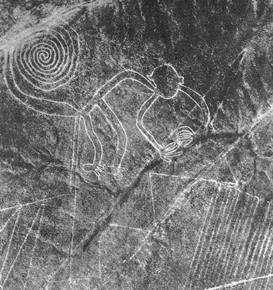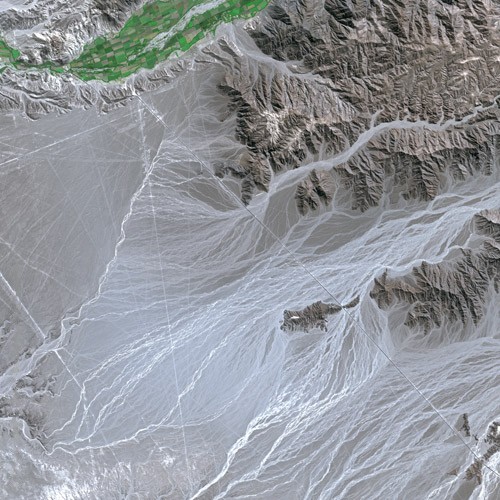Later this week I will be giving a talk for my local freethought group (SSA OSU) about extraterrestrials. But I want to before then give out info related to it, especially that concerning the ideas of aliens having come to earth in the distant past. So as part of that, I'll blog about a few interesting things that won't be adequately discussed but deserve attention.
To start off, the Nazca Lines. Which are actually two sets of features: the geoglyphs of various animals, and the straight lines that stretch across the Nazca plain about 400 km south of Lima. There has been plenty of speculation about what they are about, the most famous theories being either the ancient astronaut belief and the large star map or calendar. The latter idea is credited to Maria Reiche who saw that the animal figures related to constellations (the spider, for example, was Orion; the monkey was the Big Dipper; etc.), and the lines point to solstice sun points and the like. This has at least surface plausibility since there are plenty of astronomically interesting monuments, including Stonehenge. However, a more systematic analysis shows the lines do not fit stellar or solar alignments with statistical significant, meaning the correlations can be accounted for by chance, so there doesn't seem to be an astronomical purpose to it; the same is done with the animal figures, which again don't have the lines fit the stars better than what chance can account for.
But what is more fascinating to many is the alien hypothesis: the lines are runways that the spacecraft either used in a sort of airport or were created when the ships had to land and take off. Now, the plain doesn't actually work all that well as runways because of the composition; the stones at the surface are gypsum, a soft stone, which means that you will get stuck when driving across them. The paths of the lines also crisscross, which is a rather bad design for an airport. And why assume alien craft need horizontal takeoff? Aren't those flying saucers able to do vertical takeoff like helicopters?
There's also no signs of the lines being caused by the impact of craft landing for the first time; the lines are flat, not grooved or anything we may expect from a sort of rough landing. Moreover, the lines will all come out from a given point as rays from the sun, and often from a mountain. Are the craft all landing and running into mountains? If so, I don't see signs of clean-up after the crashes.
We also have to wonder why only in this part of the world we see this, especially since ancient astronaut popularizers want the aliens to go all over the world. So shouldn't we expect to see these features in more than just this part of South America, especially if this was their way of landing and taking off?
So the most well-known ideas of the Nazca lines don't fit the data well, but these are hardly the only speculations out there. From computers/calendars, to weaving systems, to a giant book, to Olympic runway, hypotheses abound.
The most plausible idea seems to be that worked out by archaeoastronomer Anthony Aveni: the lines are about water sources.
Going by the context, dating, and surveys (including his actual fieldwork), Aveni's research has to be the closest that we can get to the right answer given how paltry our knowledge of pre-Colombian America is (the Conquistadors didn't help by burning the ancient writings and destroying the artifacts and cultures). And aliens need not apply.


No comments:
Post a Comment